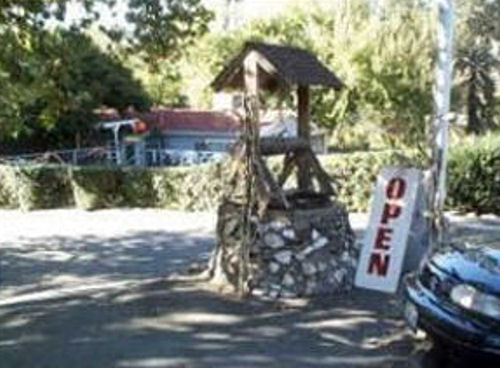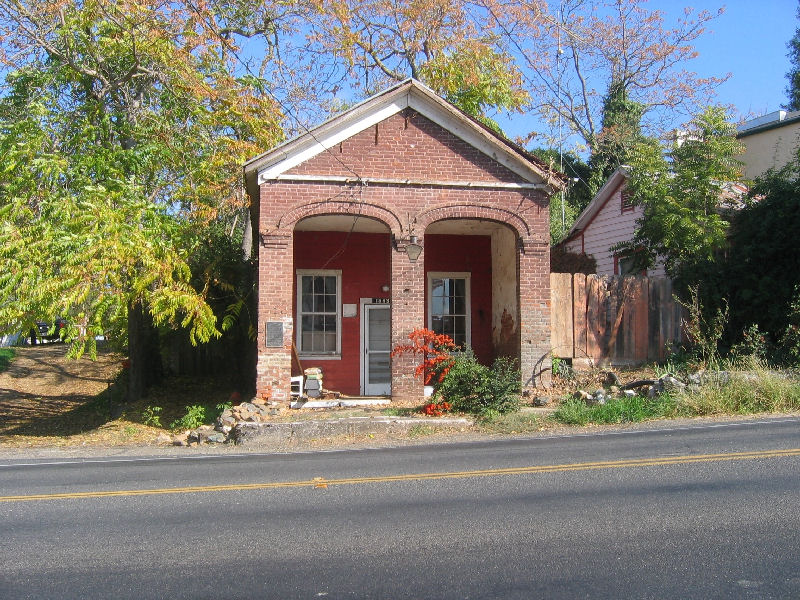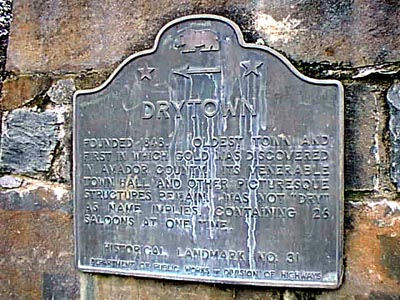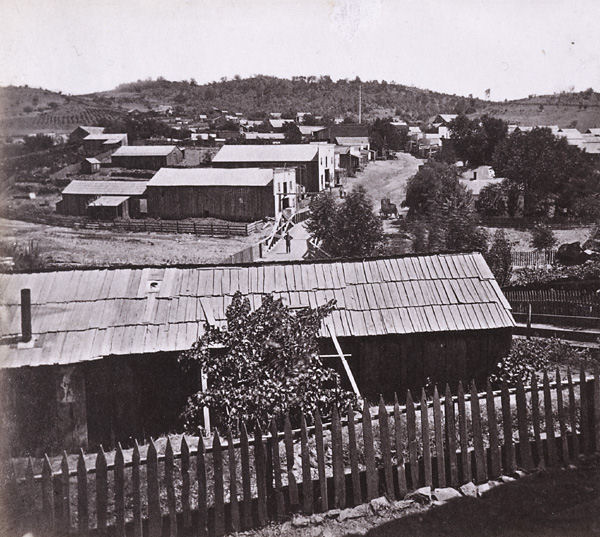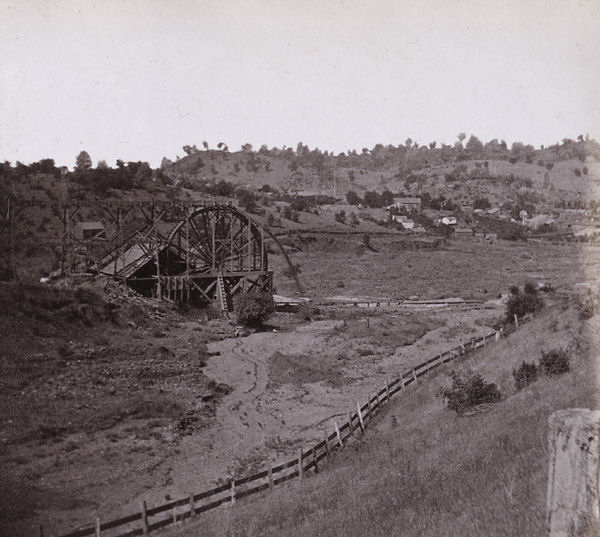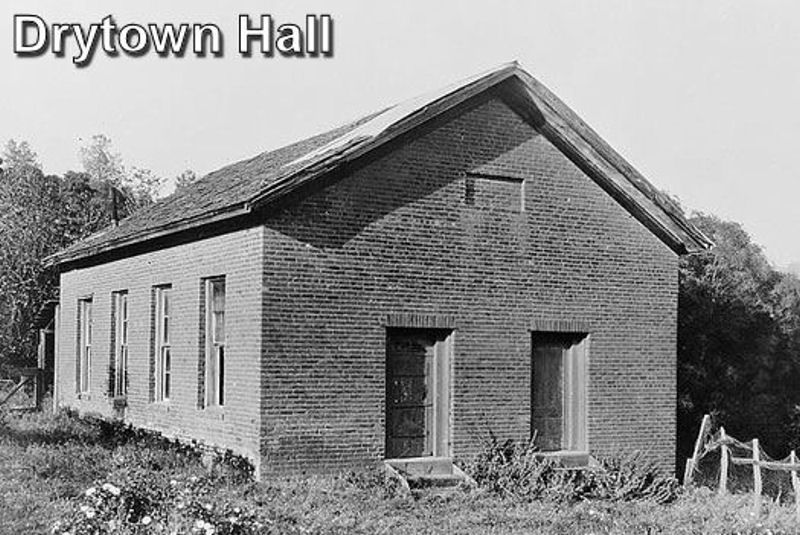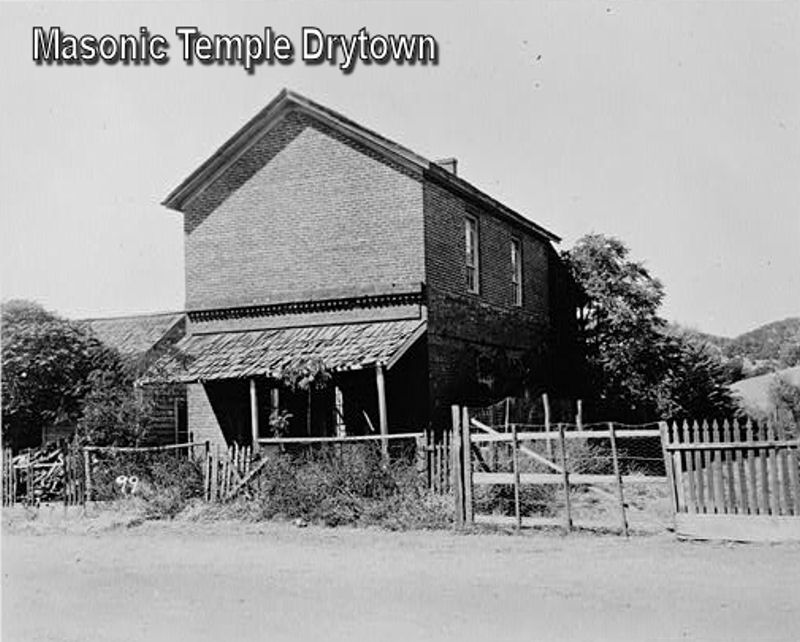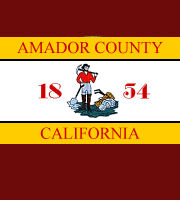





|
|
Drytown | |||||||
Mining for gold began here in the spring of 1848 when Mexican, Indian, and American miners searched for gold in the rich gravels along Dry Creek. The town which grew up around the creek was called Drytown and it is the oldest town in Amador County. Although the creek may have run dry during the summer months, legend has it the town never did, as an old story claims some twenty-six saloons wet the miners' whiskers during the early 1850's. Bayard Taylor walked into town on November 15 of 1849, finding a population of between two and three hundred miners established for the winter. Some twenty-five to thirty cabins and tents were spread out along the creek, which was crossed by walking over a fallen tree. Taylor wrote: |
|
||||||
|
"The village was laid out with some regularity and had taverns, stores, butcher shops and monte tables. The diggings was going on briskly and averaged a good return."By 1852 the town was quite well established, as an entry in Doble's diary reported there being some two hundred houses in the camp. A post office was established on January 21, with Charles Crane the first postmaster. A stamp mill was also built that year, with a school soon following, as well as a small Catholic Church located on a hill above town. The camp reached its peak around 1856, with the discovery of quartz gold deposits helping to increase the town's good times. By 1857 there were four mills with a total of fifty-two stamps, and three arrastres busily crushing ore. | |||||||
|
The Butcher Shop marble floors cut from the quarry in Fiddletown quarry and hauled to town by mule. Marble counters and a butcher block was also installed. The Butcher Shop had its beginnings in the 1860's. This small, brick structure is also in remarkable condition, looking much today as it did when first built. The porch fronted by two arched doorways, probably fitted with iron doors at one time. In years past the inside walls were completely plastered over, but now the coating is beginning to crumble away. |
||||||
The Old Well located where the old hotel once stood before falling victim to fire twice during the 1850's. The first blaze occurring in 1855 and the second in 1857. The first fire intentionally set, burned mainly the Chicano section of town in revenge for the Rancheria Massacre of August 6, 1855, where six persons, mostly Americans including one woman, was slaughtered by a group of Mexican bandits using guns, knives, and an axe. |
|
||||||
Drytown Map 
|
|||||||
Here are some old photos of drytown back in the day | |||||||
| |||||||
| |||||||
|
All graphics created and owned by Ray and Cheryl Herndon CONTACT US
|
|||||||
